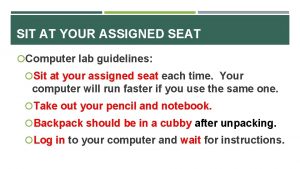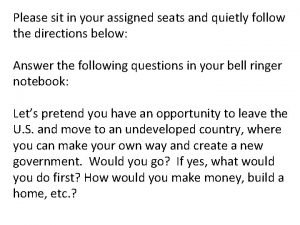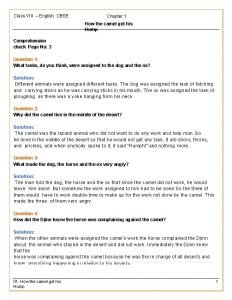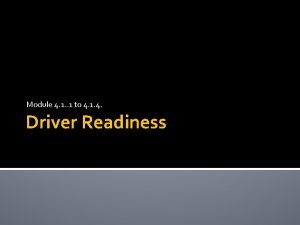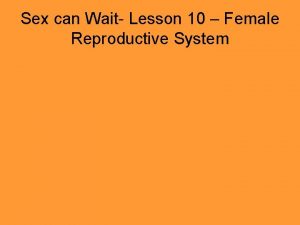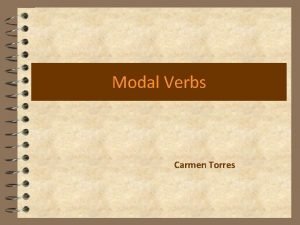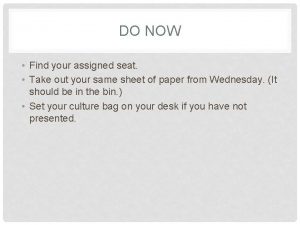WHILE YOU WAIT Find your assigned seat Pick















- Slides: 15

WHILE YOU WAIT……. . Find your assigned seat # Pick up homeostasis lab from gray bin Take out your notebook, and a pen or pencil

WARM UP In your notebook add the following definitions 1. Homeostasis 2. Feedback Mechanism 3. Positive Feedback 4. Negative feedback 5. Respiratory system 6. Cardiovascular system

LEARNING TARGETS 1. Describe feedback mechanisms which maintain homeostasis in response to environmental change. 2. Conduct and analyze an investigation to explore the relationships between feedback mechanisms and homeostasis within an organism.

HOMEOSTA SIS Regulating a Constant Internal Environment

WHAT IS HOMEOSTASIS? Refers to a state of constancy or balance In its normal resting state, a system is in homeostasis. When events occur that disrupt the normal state, the system is able to respond and restore homeostasis. Physiologists use the term homeostasis to refer to maintaining a stable internal environment. The body makes adjustments to lessen the internal impact of major external disturbances. Example: During exercise, sweating increases in order to maintain a constant internal temperature. VIDEO LINK

HOMEOSTASIS Examples of physiological factors requiring homeostasis: Temperature Concentration of Waste Products Gas Exchange p. H Energy Requirements Water/Ion balance Volume/Pressure What would happen to the organism if these were to get out of balance?

NECESSARY COMPONENTS OF A HOMEOSTATIC SYSTEM 1. Receptor 2. Control Center 3. Effector 70 72 74 76 78 80 82 84 86 88 90 92

GLUCOSE HOMEOSTASIS Lower Blood Glucose -cells release glucagon stimulate glycogen breakdown and gluconeogenesis Food Between meals -cells release insulin stimulate glucose uptake by peripheral tissues Higher Blood Glucose Video link

FEEDBACK SYSTEMS Negative Feedback Examples: • Blood sugar • p. H • Heart rate • temperature

HOMEOSTASIS IN CHILDBIRTH VIDEO LINK

FEEDBACK SYSTEMS Positive Feedback Examples: • Childbirth • Blood clot formation

DISRUPTION OF HOMEOSTASIS Injury Punctured Lung Illness Flu Disease Diabetes What happens when the body is NOT able to maintain a stable, internal environment?

FEEDBACK MECHANISMS An example of positive feedback are contractions in child birth A negative feedback example is the regulation of blood glucose levels

VARIABLES Independent and dependent The independent variable is the one that is changed by the scientist. Look over the lab and determine which is which

EXIT TICKET Describe homeostasis in your own words Give an example of a positive feedback mechanism Give an example of a negative feedback mechanism
 Sit in your assigned seat
Sit in your assigned seat Sit in your assigned seat
Sit in your assigned seat Sit in your assigned seat
Sit in your assigned seat Sit in your assigned seat
Sit in your assigned seat While cleaning your apartment you find a $50 bill
While cleaning your apartment you find a $50 bill Maintain your assigned protective mask
Maintain your assigned protective mask Describe how dog horse and ox turned against the man
Describe how dog horse and ox turned against the man Hnnh molecule
Hnnh molecule Put your right foot in put your right foot out
Put your right foot in put your right foot out If you scuff electrons from your feet while walking
If you scuff electrons from your feet while walking What can you do to control your emotions while driving
What can you do to control your emotions while driving Do loop adalah
Do loop adalah Sex can wait thin your paint
Sex can wait thin your paint The cat crept through the dark house.
The cat crept through the dark house. You say you love the rain
You say you love the rain Modal verb + be + past participle
Modal verb + be + past participle
